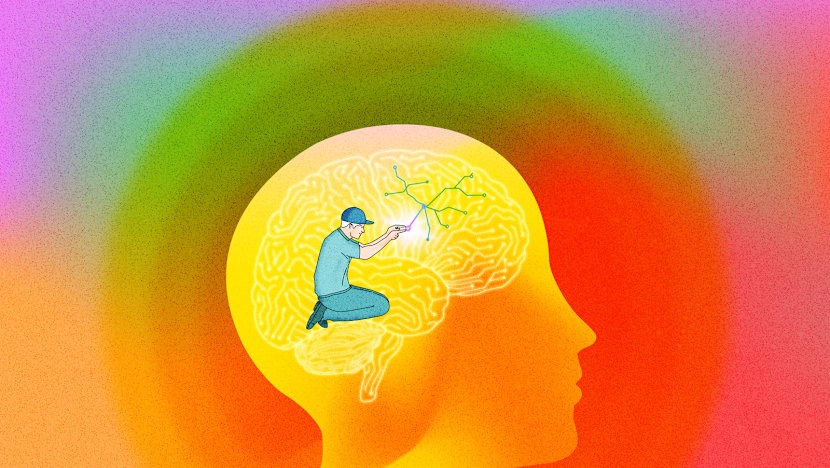Science
Science Explores the Reality Behind Manifestation Practices

The concept of manifestation, popularised by social media, suggests that visualising and affirming one’s desires can lead to real-life outcomes. While many view this as pseudoscience, recent insights from neuroscience and psychology suggest that there may be a scientific basis to these practices. Experts argue that while manifestation is not magical, the methods associated with it can indeed influence our thoughts, behaviours, and ultimately, our results.
Dr Natasha Mitter, principal clinical psychologist at Us Therapy in Singapore, explains that manifestation encompasses techniques like visualisation and affirmations, which align closely with evidence-based psychological strategies. “The brain is not static; it is shaped by repeated thoughts, behaviours, and emotional experiences,” she states. This adaptability, known as neuroplasticity, allows individuals to harness their cognitive patterns to drive motivation and reshape their futures.
In his book, Mind Magic: The Neuroscience of Manifestation and How It Changes Everything, published in 2024, the late Dr James Doty, a prominent clinical professor of neurosurgery, underscores the importance of directing attention to alter the brain’s neural pathways. He highlights that strengthening grey matter can enhance cognitive growth and personal potential.
The Science of Manifestation
Research indicates that when individuals engage in positive thoughts, visualisation, or repeat affirmations, they activate the brain’s reward and motivation systems. Dr Jean Liu, an associate professor at the Singapore Institute of Technology, notes, “It is well established that thoughts influence behaviour, which directly affects outcomes.” This principle is central to cognitive behaviour therapy, which aims to challenge negative beliefs and foster motivation.
Professor Annabel Chen, a clinical neuropsychologist at Nanyang Technological University, points to brain imaging studies demonstrating that positive self-assessment activates key areas associated with motivation. Specifically, the ventral striatum and prefrontal cortex light up when individuals envision their goals, indicating a heightened motivational state. “When you visualise your goals, your brain starts treating them as more important,” she explains.
These findings align with Dr Mitter’s assertion that visualisation engages the same neural pathways as actual experiences. Athletes frequently employ this technique, mentally rehearsing their actions to prime their brains for performance. Dr Liu adds that such mental imagery can activate similar brain regions as real-life encounters, reinforcing the connection between thought and action.
As the brain adapts through repeated exposure to affirmations and visualisation, these techniques can reshape cognitive patterns. Dr Mitter emphasises that the more one engages in specific thoughts, the more robust the corresponding neural connections become. “This applies equally to positive affirmations and negative self-beliefs,” she says, warning that the brain learns from both hope and doubt.
Effective Techniques for Manifestation
To effectively utilise manifestation techniques, experts recommend focusing on actionable goals rather than vague aspirations. Setting realistic, step-by-step objectives activates motivational circuits in the brain, preventing discouragement. Professor Chen states, “If you believe a goal is realistic and important, your brain releases the right mix of motivation signals.”
Conversely, overly ambitious goals can lead to feelings of impossibility, diminishing motivation. Thus, experts advise breaking down goals into manageable tasks and adjusting plans as needed to maintain motivation and a sense of accomplishment.
While social media often promotes passive affirmations like “the universe will provide,” experts stress the importance of using empowering language that emphasises personal agency. Dr Mitter suggests affirmations should be specific and self-directed, such as “I can handle challenges” or “I will take steps toward my goal.” These phrases activate brain regions associated with motivation and self-efficacy, fostering a proactive mindset.
Verbal articulation of affirmations also plays a significant role. Dr Mitter explains that expressing these affirmations engages linguistic processing centres in the brain, while the emotional content reinforces memory and regulation. When paired with imagery, this combination creates a powerful mental imprint, enhancing belief and motivation.
Ultimately, experts highlight the necessity of coupling positive affirmations with concrete actions. While thoughts can initiate change, it is sustained action that yields results. Professor Chen asserts, “Manifestation has a real scientific basis, but it’s rooted in motivation, neuroplasticity, and behaviour, not magic.”
Lasting transformation requires consistent effort over time. As neural pathways gradually adjust, positive thinking patterns can become automatic, influencing behaviour without conscious thought. Dr Mitter concludes, “Neuroplasticity does not mean instant transformation; it simply means the brain can change, but it takes consistent repetition, emotional impact, and effort to reshape how it works.”
In essence, while manifestation might not hold the mystical allure portrayed on social media, the underlying principles of motivation and neuroplasticity provide a credible framework for understanding how our thoughts and actions can shape our realities.
-

 Lifestyle4 months ago
Lifestyle4 months agoHumanism Camp Engages 250 Youths in Summer Fest 2025
-

 Business4 months ago
Business4 months agoKenvue Dismisses CEO Thibaut Mongon as Strategic Review Advances
-

 Sports4 months ago
Sports4 months agoDe Minaur Triumphs at Washington Open After Thrilling Comeback
-

 Top Stories4 months ago
Top Stories4 months agoColombian Senator Miguel Uribe Shows Signs of Recovery After Attack
-

 Sports4 months ago
Sports4 months agoTupou and Daugunu Join First Nations Squad for Lions Clash
-

 Health4 months ago
Health4 months agoNew Study Challenges Assumptions About Aging and Inflammation
-

 World4 months ago
World4 months agoASEAN Gears Up for Historic Joint Meeting of Foreign and Economic Ministers
-

 Business4 months ago
Business4 months agoOil Prices Surge Following New EU Sanctions on Russia
-

 Entertainment4 months ago
Entertainment4 months agoDetaşe-Sabah Violin Ensemble Captivates at Gabala Music Festival
-

 Entertainment4 months ago
Entertainment4 months agoBaku Metro Extends Hours for Justin Timberlake Concert
-

 Business4 months ago
Business4 months agoU.S. House Approves Stablecoin Bill, Sends to Trump for Signature
-

 Top Stories4 months ago
Top Stories4 months agoRethinking Singapore’s F&B Regulations Amid Business Closures









